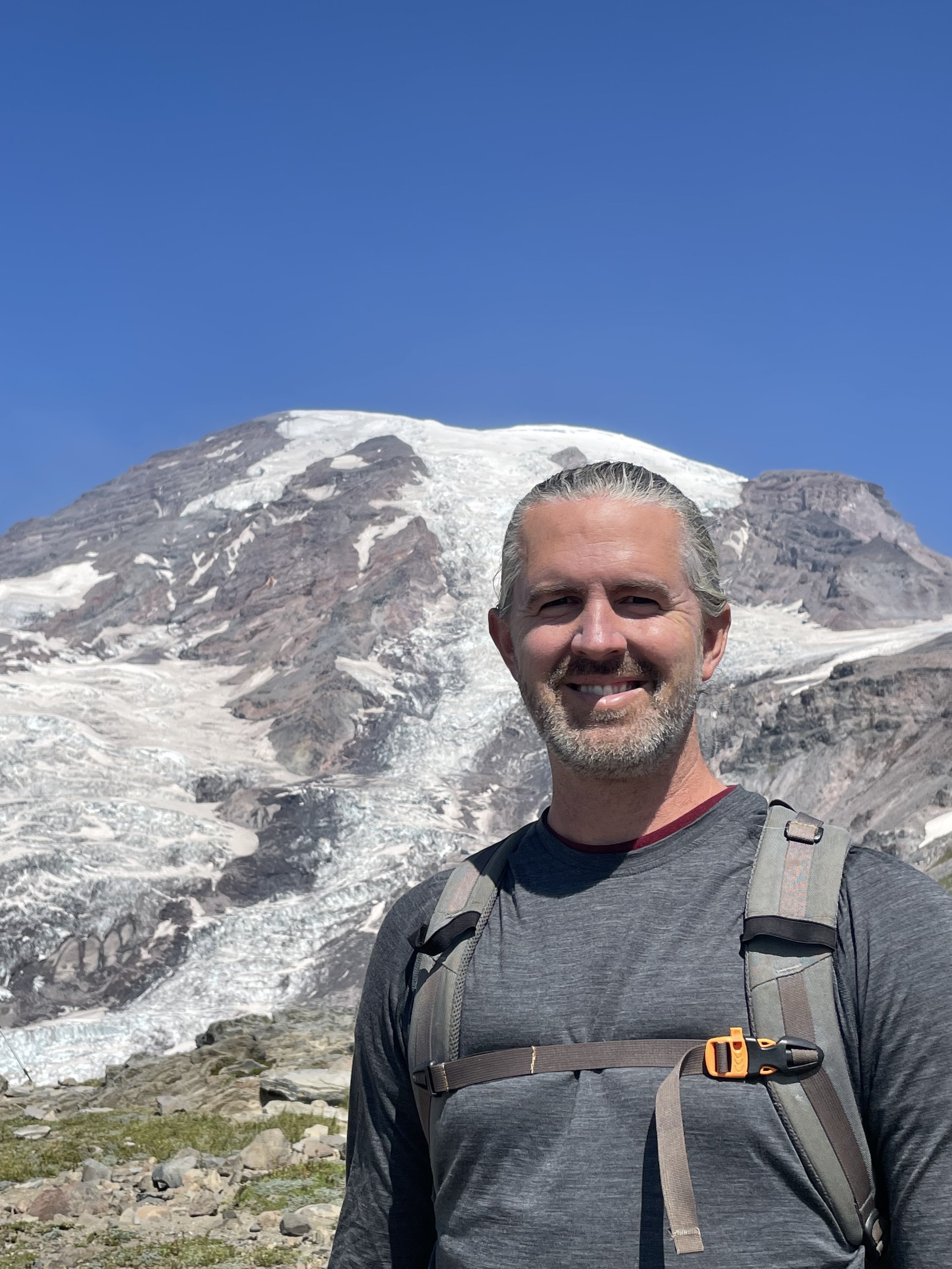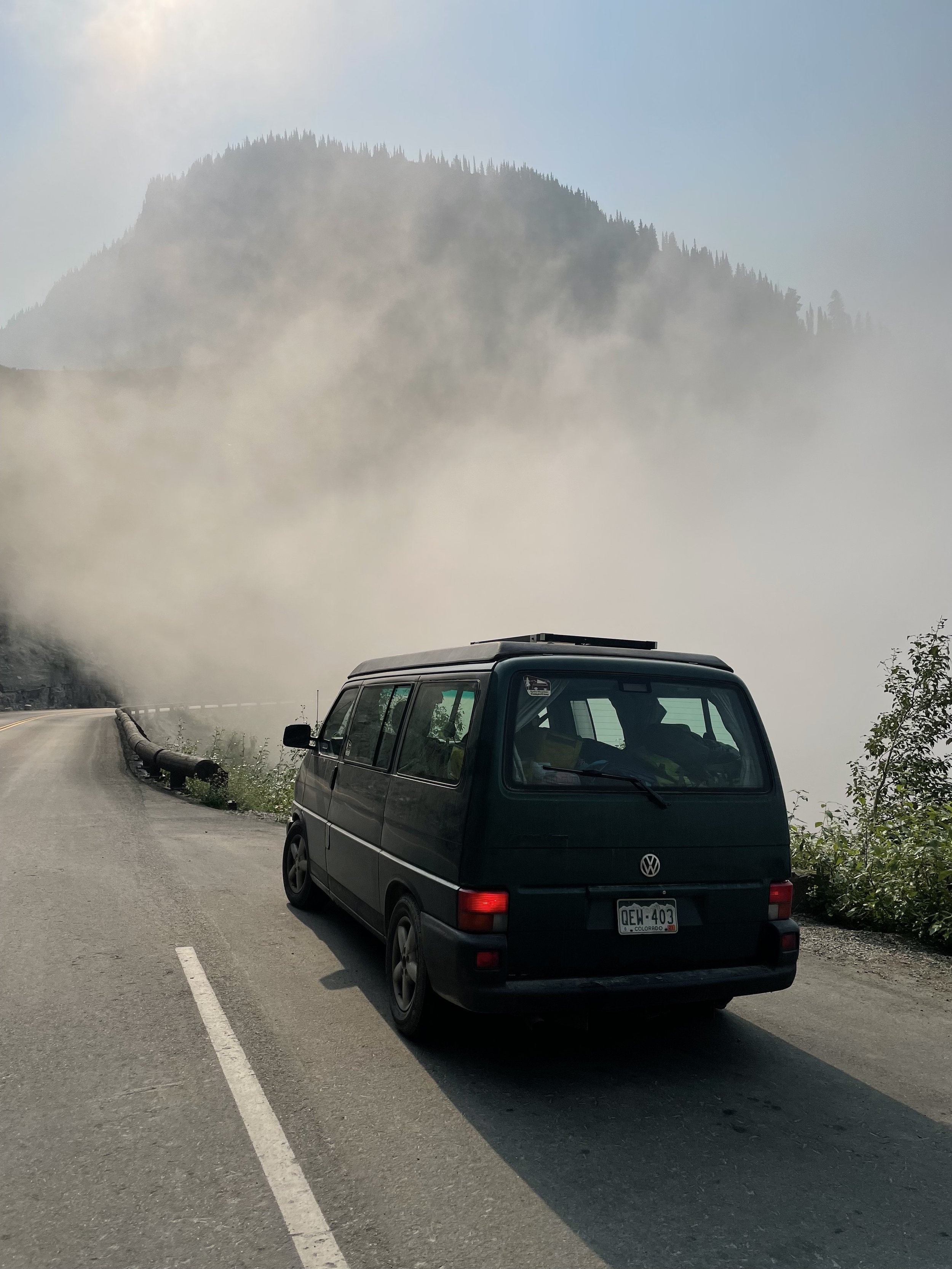USA Today Op-Ed
USA Today ran an op-ed that highlights the National Park-to-Park Tour and the impacts of climate change that we encountered. Please check it out below, as originally published by USA Today on November 8, 2021.
Climate change is hurting the great American road trip. Will my daughters go on one again?
Our national parks still wear the scars of devastating wildfires past. This summer, I saw the new scars forming on our beautiful landscape.
Chris Marvin |Opinion contributor
I filled the gas tank of our rented 2002 Volkswagen Eurovan 17 times in 31 days from mid-July to mid-August. It was a green Weekender camper van with a Westfalia pop top. The kids slept upstairs. During that month, we drove more than 3,000 miles exploring seven national parks, from the Rockies to the Olympic Mountains.
The purpose of this adventure was to share the legacy of the national parks with my children. As a combat-wounded veteran of the war in Afghanistan, there aren’t many tangible items I can show my daughters to demonstrate what I fought for overseas. Outside of an American flag or a voting booth, there are few physical manifestations of patriotism, freedom or democracy. Yet, in the national parks we can see, smell, hear and touch the very national treasures I fought to protect.
I loved traveling by camper van but felt guilty about the environmental impacts the emissions from our van were making. My feelings were compounded by the real-time climate impacts we witnessed throughout our trip.
So, while the planned theme for our trip was legacy, the surprise theme was climate change.
Tour of climate change
Our photos of the Grand Tetons in Wyoming were obscured by smoke. Rangers at Olympic in Washington told us to skip Hurricane Ridge because smoke from Oregon wildfires made the air hazardous to breathe. In the North Cascades, we drove through an active burn and witnessed wildland firefighters in action.
VW Eurovan Weekender at Moraine Park Campground, Rocky Mountain National Park in July 2021
We were often prohibited from building a campfire because of drought-induced burn bans. (So much for s’mores and ghost stories.) I even bought two portable air filters for nights when wildfire smoke seeped into our van.
In Colorado's Rocky Mountains, my daughters participated in a Junior Ranger program led by wildland firefighters just back from a deployment to Idaho. And in every park, we saw the toll that wildfires take on the forest, including areas still closed to hikers after fires last season.
Wildfires weren’t the only signs of climate change we encountered. The glaciers at Glacier National Park are expected to mostly melt before the century ends. Eerie photos on park service displays show the erosion of the glacial pack at Mount Rainier in Washington. This summer’s droughts ended boating at Grand Teton’s Jackson Lake by mid-August because the docks would soon be sitting on a dry lakebed. And, the heat! The Pacific Northwest saw highly unusual triple-digit temperatures this summer.
What the Biden administration can do
I treasure the idea of the national park road trip. It’s a part of our national culture and something everyone should experience. Many parks are only accessible by car, and most lack reliable cell service, let alone enough infrastructure to charge electric vehicles. The automobile and the road trip are here to stay. But we can – and should – make cars less harmful to our climate.
Chris Marvin at Mount Rainier National Park in July 2021
Cars and light-duty trucks are one of the largest sources of climate and air pollution in the United States, and light-duty trucks account for roughly 17% of transportation greenhouse gas pollution. At home, I drive an electric car charged from solar panels. That’s my drop in the bucket.
Remnants of the 2020 East Troublesome Fire on the Fern Lake Trail at Rocky Mountain National Park in July 2021
To achieve reductions on a global scale, the Biden administration must follow through on its promise to tighten emissions standards for new cars. With new rules underway to undo the previous administration’s rollbacks, we must ensure that any new standards are free of loopholes and are more ambitious than those introduced under any previous administration.
In 1988, huge swaths of the wilderness at Yellowstone National Park were consumed by wildfire. Hiking through those areas today, the impacts are still obvious. The regrown trees are just about 20 feet tall, and fallen tree trunks litter the landscape.
When my daughter asked me how long it would take for the 100-foot-tall Engelmann spruces or 75-foot-tall Lodgepole pines to finally return to the west side of Rocky Mountain National Park – which was devastated by the East Troublesome fire last fall – I had to tell her it would not be until long after she’s dead.
VW Eurovan Weekender on Going-to-the-Sun Road in Glacier National Park in August 2021
Our national parks are a gift passed down through generations, and the choices we make about them now have long-term effects. I am sharing this legacy with my children today, and I hope that they can pass it on to their kids in the future. For that to be possible, the federal government needs to take bold action on climate change now.
Chris Marvin is a former Army Black Hawk helicopter pilot and combat-wounded veteran of the war in Afghanistan. He is a consultant for the National Parks Conservation Association.




